
Lakeville is a town in Plymouth County, Massachusetts, United States. The population was 11,523 at the 2020 census.

Metacomet, also known as Pometacom, Metacom, and by his adopted English name King Philip, was sachem to the Wampanoag people and the second son of the sachem Massasoit. His older brother Wamsutta briefly became sachem after their father's death in 1661. However, Wamsutta also died shortly thereafter and Metacom became sachem in 1662.

King Philip's War was an armed conflict in 1675–1676 between a group of indigenous peoples of the Northeastern Woodlands and the English New England Colonies and their indigenous allies. The war is named for Metacomet, the Pokanoket chief and sachem of the Wampanoag who adopted the English name Philip because of the friendly relations between his father Massasoit and the Plymouth Colony. The war continued in the most northern reaches of New England until the signing of the Treaty of Casco Bay on April 12, 1678.
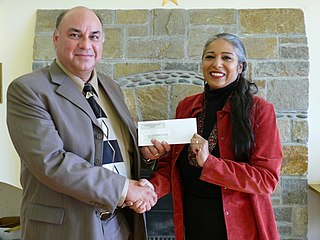
The Wampanoag, also rendered Wôpanâak, are a Native American people of the Northeastern Woodlands currently based in southeastern Massachusetts and formerly parts of eastern Rhode Island. Their historical territory includes the islands of Martha's Vineyard and Nantucket.

The Granary Burying Ground in Massachusetts is the city of Boston's third-oldest cemetery, founded in 1660 and located on Tremont Street. It is the burial location of Revolutionary War-era patriots, including Paul Revere, the five victims of the Boston Massacre, and three signers of the Declaration of Independence: Samuel Adams, John Hancock, and Robert Treat Paine. The cemetery has 2,345 grave-markers, but historians estimate that as many as 5,000 people are buried in it. The cemetery is adjacent to Park Street Church, behind the Boston Athenaeum and immediately across from Suffolk University Law School. It is a site on Boston's Freedom Trail. The cemetery's Egyptian revival gate and fence were designed by architect Isaiah Rogers (1800–1869), who designed an identical gate for Newport's Touro Cemetery.

Hollywood Cemetery is a historic rural cemetery located at 412 South Cherry Street in the Oregon Hill neighborhood of Richmond, Virginia. It was established in 1847 and designed by the landscape architect John Notman. It is 135-acres in size and overlooks the James River. It is the only cemetery other than Arlington National Cemetery that contains the burials of two United States Presidents, James Monroe and John Tyler.
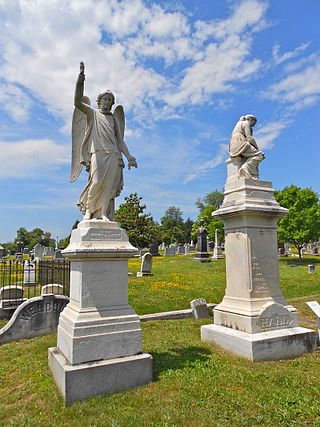
The Congressional Cemetery, officially Washington Parish Burial Ground, is a historic and active cemetery located at 1801 E Street, S.E., in Washington, D.C., on the west bank of the Anacostia River. It is the only American "cemetery of national memory" founded before the Civil War. Over 65,000 individuals are buried or memorialized at the cemetery, including many who helped form the nation and Washington, D.C. in the early 19th century.
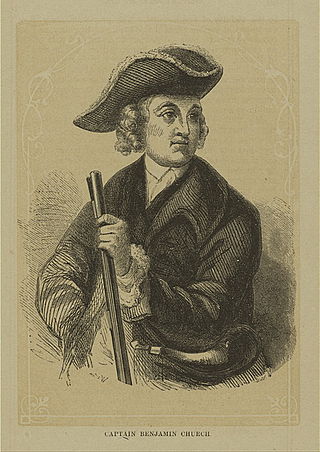
Colonel Benjamin Church was an American military officer and politician who is best known for his role in developing military tactics and participating in numerous conflicts which involved the New England Colonies. He is also known for commanding one of the first ranger units in North America. Born in the Plymouth Colony, Church was commissioned by Governor Josiah Winslow to establish a company of rangers after the outbreak of King Philip's War in 1675. A force of New Englanders led by him was responsible for tracking down and killing Wampanoag sachem Metacomet, which played a major role in ending the conflict.

The Old Burying Ground is a historic cemetery in Halifax, Nova Scotia, Canada. It is located at the intersection of Barrington Street and Spring Garden Road in Downtown Halifax.

Holyhood Cemetery is a cemetery located in Brookline, Massachusetts.
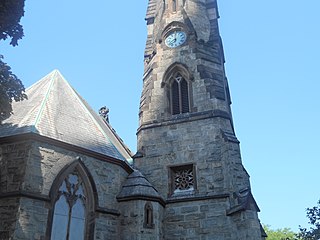
Trinity-St. Paul's Episcopal Church in New Rochelle in Westchester County, New York was added to the National Register of Historic Places in 2006. It is located at the northwest corner of Huguenot Street and Division Street. This church represents the body of the majority group of New Rochelle's founding Huguenot French Calvinistic congregation that conformed to the liturgy of the established Church of England in June 1709. King George III gave Trinity its first charter in 1762. After the American Revolutionary War, Trinity became a parish of the Protestant Episcopal Church of America.

Mound Cemetery in Marietta, Ohio, is a historic cemetery developed around the base of a prehistoric Adena burial mound known as the Great Mound or Conus. The city founders preserved the Great Mound from destruction by establishing the city cemetery around it in 1801.

The Little Neck Cemetery is a historic cemetery off Read Street in East Providence, Rhode Island, United States.

Cole's Hill is a National Historic Landmark containing the first cemetery used by the Mayflower Pilgrims in Plymouth, Massachusetts in 1620. The hill is located on Carver Street near the foot of Leyden Street and across the street from Plymouth Rock. Owned since 1820 by the preservationist Pilgrim Society, it is now a public park.
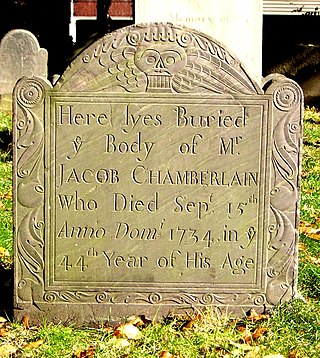
The Rumney Marsh Burying Ground is a historic cemetery on Butler Street between Elm and Bixby Streets in Revere, Massachusetts. It was added to the National Register of Historic Places in 2004. It was the first burying ground of an area that now encompasses Revere as well as neighboring Chelsea and Winthrop.
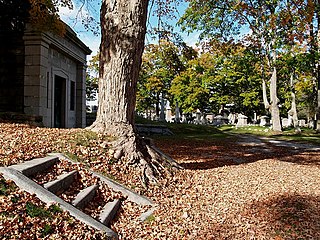
Mount Pleasant Cemetery is an historic cemetery at Crocker, Cohannet, and Barnum Streets in Taunton, Massachusetts. Opened in 1836, but based on a family burial ground dating to the early 18th century, it is the fourth garden cemetery in the U.S. rural cemeteries, based on the early Victorian model of Mount Auburn Cemetery in Cambridge, Massachusetts. The cemetery was listed on the National Register of Historic Places in 2002.

Fairview Cemetery is a historic cemetery in the Hyde Park neighborhood of Boston, Massachusetts. A small section of the cemetery is located in neighboring Dedham. The cemetery was established by the town of Hyde Park in 1892, and became the responsibility of the city of Boston when it annexed that town in 1912. The cemetery was added to the National Register of Historic Places on September 16, 2009. It is the newest of Boston's cemeteries, and has more than 40,000 burials. It is the location where the City of Boston “bury indigent and unclaimed people”.

La Pointe Indian Cemetery is the common name of the St. Joseph Mission Cemetery, located on Madeline Island in La Pointe, Wisconsin. It was added to the National Register of Historic Places in 1977. It is a frequently visited historical site.

The Middle Cemetery is an historic cemetery on Main Street in southern Lancaster, Massachusetts. Established in 1798, it is the town's third oldest cemetery, with active burials taking place until 1969. The cemetery was listed on the National Register of Historic Places in 2019.
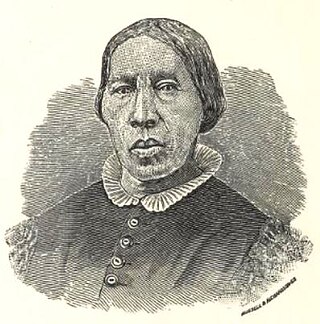
Zerviah Gould Mitchell was a Wampanoag educator, basket weaver, and direct descendant of the sachem Massasoit. In 1878, she published Indian History, Biography and Genealogy: Pertaining to the Good Sachem Massasoit of the Wampanoag Tribe, and His Descendants with historian Ebenezer W. Peirce, and the book included a narration of the life of Massasoit, as well as a genealogy of Massasoit's descendants.
























